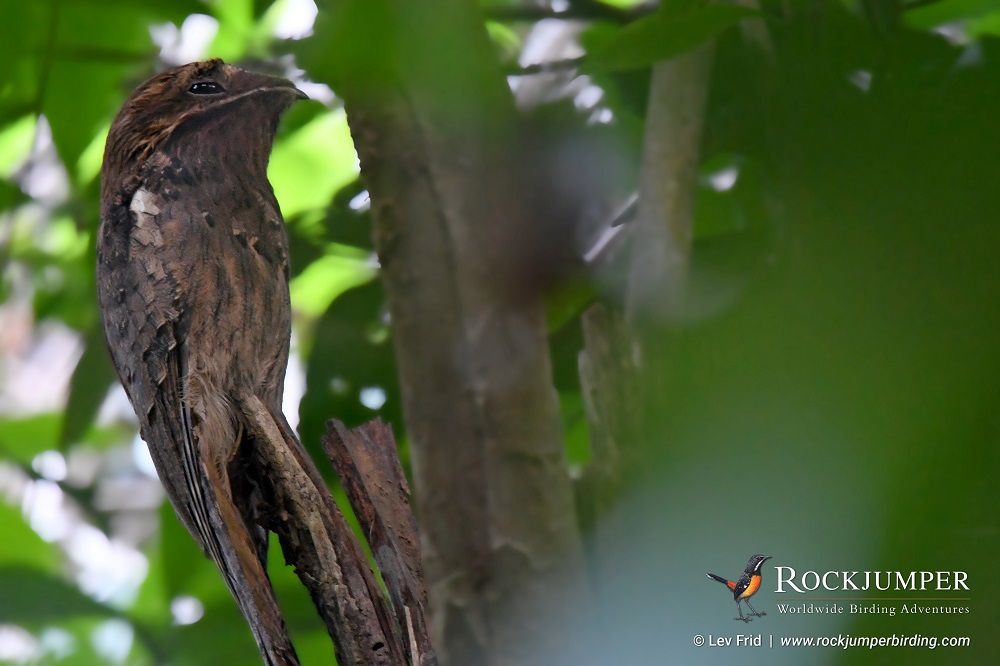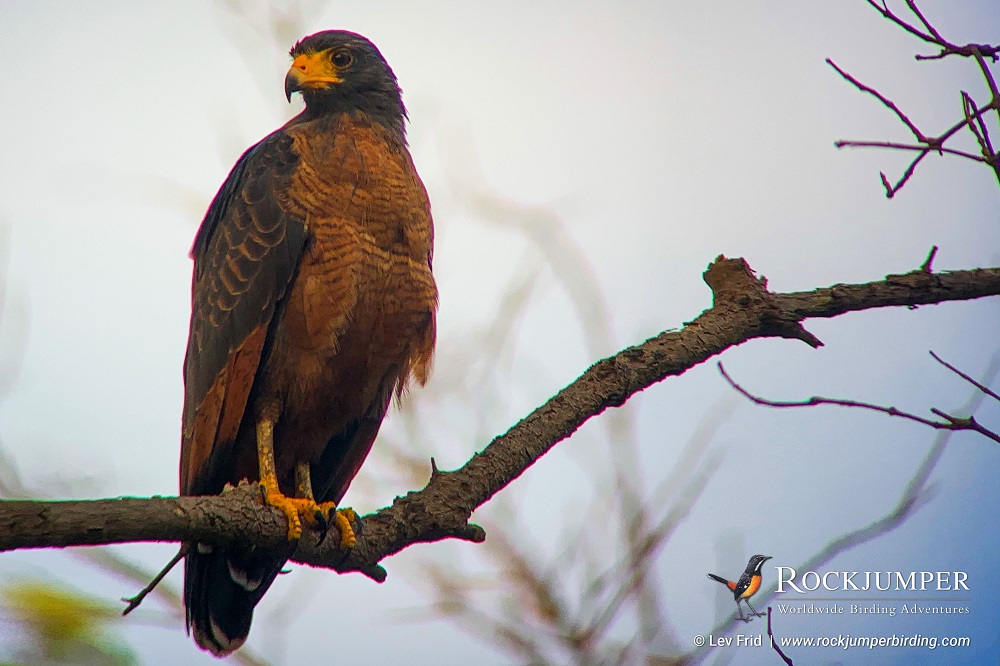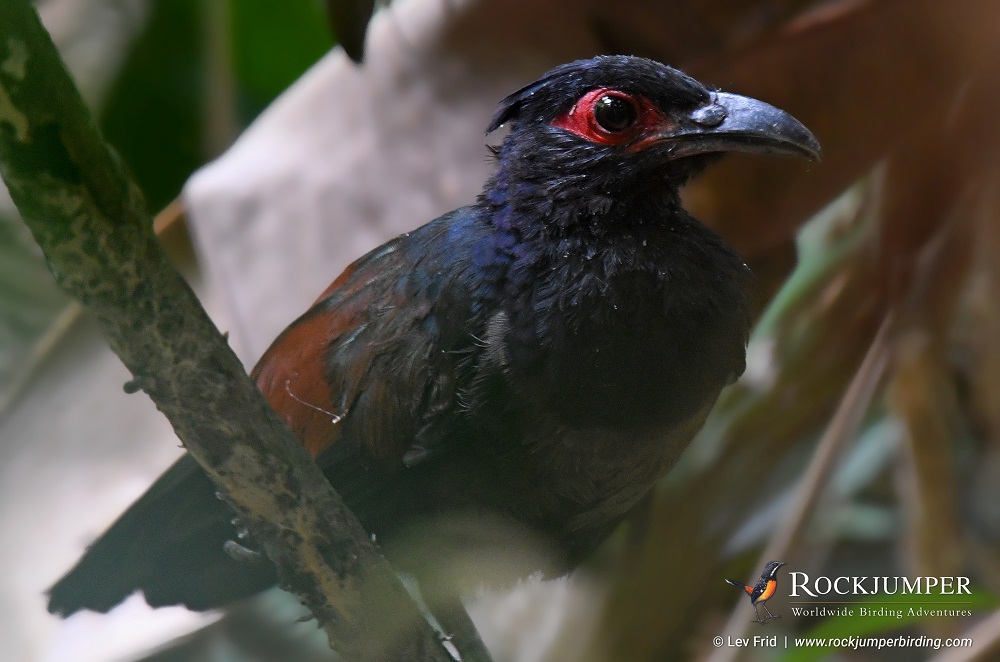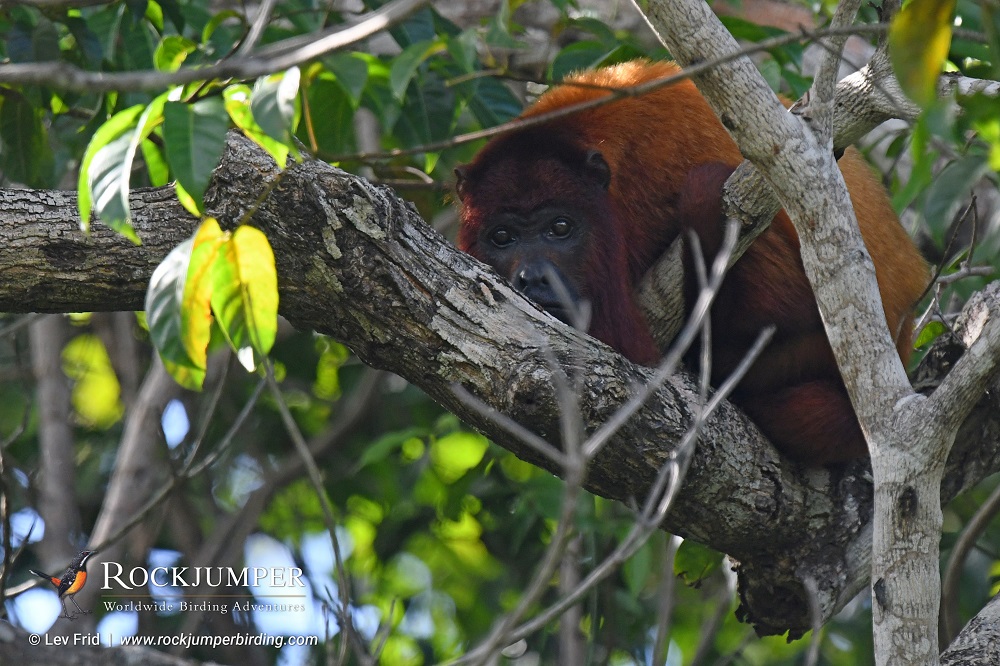From the grandeur of Kaieteur Falls to the vast interior and savannas, Guyana has something to offer all sorts of birders, from photographers to keen listers.
Guyana is a country at the north end of South America, situated on an endemic-rich geological feature known as the Guiana Shield. Most of its population is centered in the capital, Georgetown, and much of the rest of the country is untouched primary rainforest. This combination makes Guyana a birding and wildlife-watching paradise, with 40+ Guiana Shield endemics, and large mammals such as Giant Anteater and Jaguar being sighted with some regularity. Guyana is a fairly new destination for birding, but already there is a network of fine lodges and local birding guides that are ready for your venture into this deepest jungle, with many amazing records being registered with every trip.

Coastal forest and mangroves provide the perfect habitat
This is the first of the habitats usually visited on a tour and contains the most localized endemics – such as Rufous Crab Hawk and the gorgeous Blood-coloured Woodpecker, as well as an important site for wading birds and shorebirds. Millions of shorebirds spend the winter on the extensive mudflats, and it is one of the most important wintering sites for North American breeding shorebirds in the world. One of the gaudiest denizens of this coastal habitat is the remarkable Scarlet Ibis. While not an endemic, the spectacle of hundreds of these birds milling about the mudflats or flying overhead is an incredible sight. Boat trips through this mangrove forest often produce a dizzying array of herons and kingfishers in addition to the more specific targets as well as the prehistoric-looking Hoatzin, which often allows a very close approach.
Kaieteur Falls – the world’s largest waterfall by volume
Kaieteur Falls is four times higher than Niagara. Just getting to the falls itself is a highlight, journeying from Georgetown on a small aircraft over the vast rainforest and distant Pacaraima Mountains, with barely a road or village transecting your view. It is truly one of the largest remaining stands of tropical primary forest that exists! Once you’ve seen the falls from the air, a short hike brings you to a land-based viewpoint. But do not let your guard down! Famous residents at Kaieteur include Guianan Cock-of-the-Rock, and sometimes it is possible to watch them lekking within arms-length of you while still hearing the falls in the background. Dusky Purpletuft, Rufous-crowned Elaenia, and a host of others also occur in the area, and make sure to peek into the water-filled terrestrial bromeliads near the edge of the gorge to see the endemic Golden Rocket Frog.

The vast Guyanese interior
For many birders, the highlight of birding is the vast Guyanese interior. Here, you could spend hours driving on the highways and not see another car or building – but you may see a Jaguar, Puma, Ocelot, Tapir, or any number of smaller mammals sharing the road. A couple of fantastic natures lodges featuring all the creature comforts of any birding lodge, including an excellent yard list, await. Birds that require large tracts of forest are common, though the nature of the habitat can make them tricky to find! These are the haunts of Harpy Eagle, Orange-breasted Falcon, Black Currasow, Crimson Fruitcrow, Red-and-back Grosbeak, Blue-and-yellow Tanager, Green Araçari, Guianan Toucanet and many others. Jacamar diversity is very high, with Bronzy, Yellow-billed, Great, Green-tailed, and the stunning Paradise Jacamar to be found within this forest.
Likewise, the night birding is incredible – all but two of the world’s potoos exist here, and the local guides usually know exactly where to find them. Sometimes one gets very lucky and we can spot a few of them during the day. This is the norm for the world’s toughest and most little-understood potoo – the Rufous Potoo. This diminutive potoo differs from its relatives in that it roosts well in the understory, making it even more challenging to find. The holy grail of birding in the Guyanese interior is finding a large army ant swarm. Here, spectacular antbirds, such as White-plumed and Rufous-throated, jostle for the best position to capture the ant’s fleeing quarry. Several lucky birders have had the chance to see the near-mythical Rufous-winged Ground Cuckoo haunting these ant swarms.
Leaving the interior, we journey into the vast Rupunini savannas. This spectacular grassland plays host to a whole new variety of birds. Here is also the best chance we have at spotting the impressive Giant Anteater, lumbering through the savanna in search of its preferred prey – termites. Birds seen here include the stately Maguari Stork, the secretive Pinnated Bittern, the much sought-after Crested Doradito and a whole host of others. A very productive boat ride along the Rupunini river is a highlight – Giant Otters have been seen here – and the best chance for seeing the absolutely stunning Agami Heron. Giant Water Lilies open up their flowers as it starts to get dark, another amazing sight to take in on our time at the river, as hundreds of Band-tailed Nighthawks emerge. If we are extremely lucky, we may even spot the diminutive Zigzag Heron!





